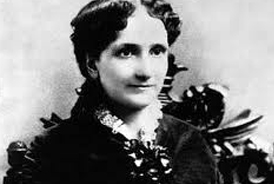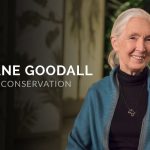by Peter J. Henniker-Heaton: Monthly on the cover of The Christian Science Journal Mary Baker Eddy is named as author of the Christian Science textbook, “Science and Health with Key to the Scriptures.”  To many Mrs. Eddy is known as the Discoverer and Founder of Christian Science, the beloved Leader and organizer of an active religious movement. But to many others she is first an author, and specifically the author of Science and Health.
To many Mrs. Eddy is known as the Discoverer and Founder of Christian Science, the beloved Leader and organizer of an active religious movement. But to many others she is first an author, and specifically the author of Science and Health.
The latter have reason so to think of her. In a moment of emptiness or grief, of physical despair or moral vertigo, they have come upon this book and read it. Grief has lifted; frustration has made way for new purpose; moral balance has been regained; disease, sometimes inveterate, organic, medically judged incurable, has been healed completely and permanently.
This healing virtue found in Science and Health is basic to all of Mrs. Eddy’s writings on Christian Science. Any evaluation of her as author must give it full weight. Science and Health first appeared in 1875. Since 1902 all its editions have included one hundred pages of testimonies from men and women right across the United States, in the provinces of Canada, and in the United Kingdom; these, selected from many thousands available, tell of lives transformed by the reading of Science and Health. The various Christian Science periodicals too from their earliest issues have carried similar testimonies; they still carry such from all around the globe. The written word from Mrs. Eddy’s pen expounds, challenges, and persuades. It also heals. It changes phenomena. It exercises power.
The Bible recognizes repeatedly that “the word of God is quick, and powerful,” 1 precisely accomplishing God’s purposes. The Bible exercises power because it contains God’s Word. This Word appears progressively in the sayings and experiences of patriarchs, prophets, and finally of Christ Jesus; in him “the Word was made flesh,” 2 God’s Word was expressed in terms of a human life.
Mrs. Eddy’s healing in 1866, from which she dates her discovery of Christian Science, came as she read the Bible. The Swiss theologian Karl Barth has written: “It is not the right human thoughts about God which form the content of the Bible, but the right divine thoughts about men. The Bible tells us not how we should talk with God but what He says to us.” The Bible has exercised transforming power upon men’s lives because its content came by divine inspiration and impulsion. Its writers record the Word of God.
The truths of Science and Health came to Mrs. Eddy by this same divine impulsion. The stupendous revelation of Christian Science dawned on her thought with shining irresistible certainty; and she found corroboration for it in the Bible. The Scriptures had been her lifelong companion. Now for three years following her healing they were virtually her sole reading. A few years after the earliest publication of her book, then called “Science and Health,” she added to the title “with a Key to the Scriptures.” (Later the “a” was dropped.) From the first she had intended it to be this key. Her revelation was to unlock for readers the springs of Scriptural power.
Mrs. Eddy’s writings heal because, like the Bible, they contain the Word of God. Science and Health is not the speculations of an enlightened human thought about God. It is an inspired record of what God says of Himself, His own declaration of His will and purpose and ability to bless. Here the divine Word is expressed not through personal life-histories but as universal Science; once again the Word is “made flesh” but now in the form of Christ-healing.
Of the Christian Science textbook, Mrs. Eddy writes simply, “It was not myself, but the divine power of Truth and Love, infinitely above me, which dictated ‘Science and Health with Key to the Scriptures.'” 3 Of her writings on Christian Science in general she says, “I was a scribe under orders.” 4 To those who have found healing in her writings, these statements make sense; they carry conviction.
Inspired writing is not easy writing. It is not automatic writing. It does not bypass individuality. In the Bible, God’s Word expressed itself through individuals. And it made mighty demands on them. They must let go all sense of personal selfhood, personal ability, personal achievement; yet they must harness to God’s service whatever they already had of talent, training, experience, diligence, uniqueness. Divinely impelled, Mrs. Eddy, like the Bible writers, responded to this twofold demand, humanly contradictory but divinely normal.
What did Mrs. Eddy bring to her task of inspired authorship? What demand did it make upon her? How was she able to respond so totally to the demand?
From childhood she aspired to write a book. She studied to equip herself with a general background of knowledge. She read. She cultivated an excellent memory. Her abundant sympathies and ready interest brought intellectual and emotional enrichment. By her mid-twenties she was regularly contributing to various New England publications. Her output included verse and romantic fiction. She also wrote directly on political and social matters, morals and religion.
Mrs. Eddy’s discovery of Christian Science gave her literary development new orientation. To write a book was no longer a human aspiration; it was divine necessity. It is easy to overrate the importance of Mrs. Eddy’s earlier experience of authorship. In founding Christian Science she successfully discharged heavy tasks for which she had had no human preparation. To one called upon to develop new skills in a related area, prior professional training can actually prove a hindrance. But at least Mrs. Eddy knew the labors of authorship. The word “leisure” appears nowhere in her books. She was ready to work tirelessly—revising, clarifying, purifying—so that the Word of God might shine out unobscured.
In an early sermon Mrs. Eddy states, “God is All, and in all: that finishes the question of a good and a bad side to existence.” 5 This for her was no philosophic abstraction. She ends the same paragraph: “If you wish to be happy, argue with yourself on the side of happiness; take the side you wish to carry, and be careful not to talk on both sides, or to argue stronger for sorrow than for joy. You are the attorney for the case, and will win or lose according to your plea.”
These seventy-four words, sixty of them with only one syllable, give the core of Mrs. Eddy’s discovery: that God, good, is All, that evil is consequently nothing, and that these truths are progressively provable in human experience. She had searched the Scriptures for the Christly law behind Jesus’ works. She had found it. She had made the greatest spiritually scientific breakthrough since Jesus’ time. It was, indeed, the final breakthrough; there can be nothing beyond the fact that good is all, that evil is nothing, and that this allness and nothingness are scientifically demonstrable. Upon this courageous solitary penetration of unmapped mental territory Mrs. Eddy had now to report.
Communicating a discovery is a problem even to the natural scientist. In 1895 Roentgen discovered a new type of ray. The next year The Christian Science Journal reprinted this contemporary comment: “There is as yet no name for the interesting stranger.” This “stranger” is still known as an X ray, X denoting an unknown quantity.
Similar, but immensely more complex, was the problem Mrs. Eddy faced. She must communicate utterly new spiritual truths in language formed primarily to serve humanity’s material wants. How triumphantly she mastered this problem is witnessed by the fruitage from her writings. The spiritually hungry, whatever their human background, have responded to these. Men, women, quite young children, have drawn from them spiritual comfort, healing, direction, and a deep concern to share the good news with others.
To convey her thought, Mrs. Eddy sometimes picked a striking term from the speech of her day. Seeing the downward drag exerted on deluded mortals by the animal lie of sentient matter, she identified “animal magnetism” as exactly fitted to specify the nature and action of this suppositional opposite of divine Truth. Oftener she chose ordinary words, irradiating them with new spiritual light.
Justice Oliver Wendell Holmes, delivering a Supreme Court opinion, once said, “A word … is the skin of a living thought and may vary greatly in color and content according to the circumstances and the time in which it is used.” Mrs. Eddy frequently employs a single word for divergent purposes according to context. Her language is accurate but dynamic. It discourages any illusion that spiritual revelation can be snared in rigid verbal formulas. More familiar with Webster than with the Oxford-style dictionary, she makes current developing usage, not ancient roots, the prime factor in her choice of words; on occasion she contributes to their development herself.
In spiritual teaching, metaphors and similar figures of speech play an essential part in bridging the chasm between human appearance and divine actuality. In her autobiographical sketch, “Retrospection and Introspection,” Mrs. Eddy mentions, “From childhood I was a verse-maker.” 6 As such she had long experience with metaphor, simile, and symbol. Her metaphors drawn from optics and astronomy provide but two examples of her skill in this area of language.
Even a passing literary fashion, employed by Mrs. Eddy, transcends conventionality; she clothes it in lasting significance. “Dear reader,” she writes, and “dear sufferer.” Divine Love, which she had discovered to be the Principle of the universe, is infinitely adaptable; her statement of its law and operation addresses itself to each reader, each sufferer, at the point of his need at the moment of reading. So daily, decade after decade, individuals turn to Science and Health and find its pages as though written specifically for them, as though written for that very hour.
Christian Science, being Science, can be taught. Science and Health is a textbook. Among its roots were notes which Mrs. Eddy made for teaching; and she expected her students to use it for teaching. In preparing new editions, she sometimes engaged literary assistants; these worked under her close supervision. In 1901 two such helpers received written instructions that read in part, “First be sure that you gain my meaning, and then preserve it strictly throughout the book.” 7 One of them later wrote, “The book has improved, and it is because she has improved it.” 8 Science and Health remains a textbook for teacher and student; today, within the terms of this primary purpose, it is also a work of literature.
Some of these matters may seem only the small change of authorship. But it is as many small problems are patiently and faithfully solved by authors that great seminal books come into being to fling their potent seed across the ages, as Science and Health has already begun to do.
Mrs. Eddy’s published writings on Christian Science include books, sermons, articles, poems, and the Manual of The Mother Church. One who knew her well has written: “The other writings of Mary Baker Eddy . . . seem to me to be the records of her own demonstration of Science and Health. They are the breaking of the bread of Life contained in the textbook, and are inspired by the same divine Spirit.” 9 Those who have been touched by the healing power of these other writings have no doubt of their inspiration.
The scenes where Mrs. Eddy wrote or meditated—the little houses at Amesbury and Stoughton, her attic room at Lynn with skylight and rocker, Red Rock, wave-lapped and fanned by ocean breezes, and her last more spacious home at Chestnut Hill—may be visited. They have their interest. But the one constant topographical feature in Mrs. Eddy’s authorship is altitude, the spiritual altitude of her healing thought. From this peak of unselfed love for God and men, of moral purity and far-ranging vision, she listened for the divine word and recorded it. Guided by Spirit, she found problems of language and communication solved.
“Christian Science,” Mrs. Eddy writes, “involves a new language, and a higher demonstration of medicine and religion. It is the ‘new tongue’ of Truth, having its best interpretation in the power of Christianity to heal.” 10 Readers may assess Mrs. Eddy’s writings by various standards; each one’s judgment is largely a measure of his own spiritual qualifications or lack of them. Whoever responds to the spiritual power in her books is healed and blessed. By such the magnitude of Mrs. Eddy’s achievement as an author is understood. By such, in reverence, gratitude, and love, it is correctly evaluated.
With joy shall ye draw water out of the
wells of salvation. And in that day shall ye say,
Praise the Lord, call upon his name,
declare his doings among the people, make mention
that his name is exalted. Sing unto the Lord;
for he hath done excellent things.









































